Vue d'ensemble Poudre Stellite 21
La poudre Stellite 21 est un alliage à base de cobalt connu pour sa remarquable résistance à l'usure, à la corrosion et aux hautes températures. Développés à l'origine par Elwood Haynes au début du 20e siècle, les alliages Stellite sont devenus essentiels dans les industries qui exigent une durabilité dans des conditions extrêmes. Le stellite 21, en particulier, se distingue par son équilibre impressionnant entre dureté, ténacité et résistance à la corrosion. Souvent utilisé dans des applications impliquant des outils de coupe, des vannes, des moteurs à turbine et des revêtements de haute performance, il constitue l'un des meilleurs choix pour prolonger la durée de vie des composants dans des environnements abrasifs et soumis à de fortes contraintes.
Cet article présente tout ce qu'il faut savoir sur la poudre Stellite 21 : sa composition, ses caractéristiques, ses avantages et ses inconvénients, ses différentes applications, ses modèles, ses spécifications, ses fournisseurs et ses prix. Plongeons dans ce qui fait de cette poudre métallique un produit incontournable dans les industries lourdes et au-delà.
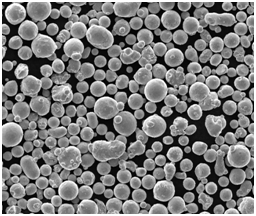
Qu'est-ce que la poudre Stellite 21 ?
La poudre Stellite 21 est principalement un alliage de cobalt et de chrome, auquel on ajoute de petites quantités d'autres éléments tels que le molybdène et le nickel, afin de lui conférer une résistance et des performances accrues. Il est largement reconnu pour sa capacité à conserver sa dureté même à des températures élevées et dans des environnements corrosifs. L'alliage est généralement utilisé sous forme de poudre pour des applications de revêtement telles que la pulvérisation thermique, le rechargement par laser ou la fabrication additive sur lit de poudre.
Composition de la poudre Stellite 21
Le cœur de la poudre Stellite 21 est sa composition chimique équilibrée, qui lui confère ses propriétés distinctes.
| Élément | Pourcentage Composition |
|---|---|
| Cobalt (Co) | 55-60% |
| Chrome (Cr) | 27-30% |
| Molybdène (Mo) | 4.5-6% |
| Nickel (Ni) | 2-3% |
| Fer (Fe) | <3% |
| Carbone (C) | 0.20-0.30% |
| Silicium (Si) | <1% |
| Manganèse (Mn) | <1% |
Comme le montre le tableau ci-dessus, le cobalt constitue l'essentiel de l'alliage, tandis que le chrome apporte la résistance vitale à la corrosion et à l'oxydation. Le molybdène renforce encore la solidité du matériau et sa résistance aux piqûres, ce qui en fait un choix approprié pour les environnements opérationnels difficiles.
Caractéristiques des Poudre Stellite 21
- Résistance à l'usure: Grâce à sa base de cobalt, la poudre Stellite 21 est réputée pour son excellente résistance à l'usure. Elle résiste bien à l'abrasion, au grippage et à l'érosion, ce qui la rend idéale pour les applications à forte usure.
- Résistance à la corrosion: La teneur élevée en chrome permet à l'alliage de résister à la corrosion, même dans des environnements chimiquement agressifs, y compris ceux qui contiennent du soufre et du chlore.
- Stabilité à haute température: L'une des caractéristiques uniques de la poudre Stellite 21 est sa capacité à conserver sa dureté et sa résistance à des températures élevées (jusqu'à 950°C). Cette propriété la rend très intéressante pour les composants de moteurs à turbine et les échangeurs de chaleur.
- Équilibre entre ténacité et dureté: Contrairement à certains matériaux plus durs qui ont tendance à être cassants, la stellite 21 présente un bon équilibre entre la ténacité et la dureté, ce qui garantit la durabilité sous les contraintes d'impact.
Applications de la poudre Stellite 21
La poudre Stellite 21 est utilisée dans diverses industries où la durabilité et les performances dans des conditions difficiles sont des exigences clés. De l'aérospatiale aux implants médicaux, voici où elle fait sa marque :
| L'industrie | application |
|---|---|
| Aérospatiale | Aubes de turbines, échangeurs de chaleur, tuyères de carburant |
| Pétrole et gaz | Sièges de soupape, forets, composants de pompe |
| Automobile | Pièces de moteur haute performance, arbres à cames |
| Dispositifs médicaux | Implants orthopédiques, instruments chirurgicaux |
| Production d'électricité | Turbines à vapeur et à gaz, composants de chaudières |
| Exploitation minière et terrassement | Plaques d'usure, broyeurs, pièces de concassage |
| Génie maritime | Arbres d'hélices, vannes marines, roues de pompes |
Pourquoi la poudre Stellite 21 est-elle utilisée dans ces applications ?
- Aérospatiale: La capacité de l'alliage à conserver sa résistance mécanique à des températures élevées le rend essentiel dans les moteurs à turbine, qui fonctionnent dans des conditions de chaleur et de pression extrêmes. Sa résistance à la corrosion garantit sa longévité dans des environnements aussi difficiles.
- Pétrole et gaz: Les conditions difficiles et chimiquement agressives que l'on rencontre dans le forage et l'extraction du pétrole nécessitent un matériau comme le Stellite 21 qui peut résister à l'usure et à la corrosion. Les composants tels que les sièges de soupapes sont soumis à la fois à des contraintes élevées et aux effets érosifs des fluides et des gaz, ce qui fait de cet alliage un choix idéal.
- domaine médical: En raison de sa biocompatibilité et de sa résistance à l'usure, la poudre Stellite 21 est fréquemment utilisée dans la fabrication d'implants orthopédiques et d'outils chirurgicaux durables. Elle offre une durée de vie plus longue que d'autres matériaux.
Comparaison de différents modèles de poudres métalliques pour la stellite 21
Lorsque vous choisissez des poudres Stellite 21 pour une application particulière, vous pouvez rencontrer différents modèles, chacun adapté à des processus spécifiques tels que le rechargement par laser, la pulvérisation plasma ou la fabrication additive.
Modèles courants de poudre Stellite 21 et leurs descriptions
| Modèle | Description |
|---|---|
| Stellite 21-G | Poudre fine, mieux adaptée aux processus de pulvérisation thermique |
| Stellite 21-LC | Spécialement conçu pour le revêtement au laser, il offre une excellente force d'adhérence |
| Stellite 21-AM | Optimisé pour la fabrication additive, il garantit un dépôt de couche régulier |
| Stellite 21-HP | Poudre haute performance utilisée dans les techniques de pulvérisation plasma pour les applications de revêtement |
| Stellite 21-HVOF | Utilisé pour la pulvérisation d'oxy-combustible à haute vitesse (HVOF), il permet d'obtenir des revêtements denses |
| Stellite 21-PW | Poudre grossière, préférée pour le soudage à la poudre et le soudage à l'arc avec transfert de plasma |
| Stellite 21-SC | Poudre de revêtement standard pour une protection générale contre l'usure et la corrosion |
| Stellite 21-SP | Poudre super fine idéale pour le frittage laser et la fusion sur lit de poudre |
| Stellite 21-AP | Poudre à usage général conçue pour le revêtement de pièces dans les secteurs de l'aérospatiale et de l'automobile |
| Stellite 21-M | Conçu pour les processus de moulage par injection de métaux (MIM) à haute performance |
Chacun de ces modèles est formulé pour répondre à des besoins spécifiques dans le cadre de différents processus de fabrication et de revêtement. Par exemple, la Stellite 21-LC est optimisée pour le cladding au laser, assurant une liaison métallurgique forte, tandis que la Stellite 21-HP est exceptionnellement performante dans les techniques de pulvérisation au plasma, fournissant des revêtements de haute densité.

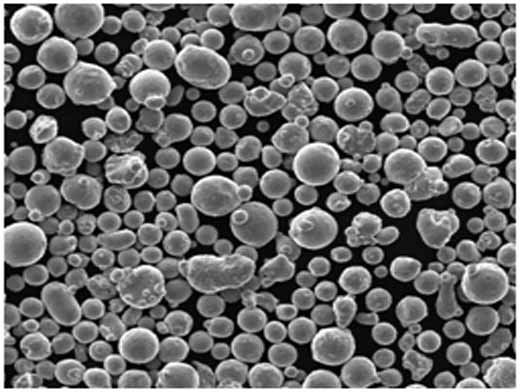

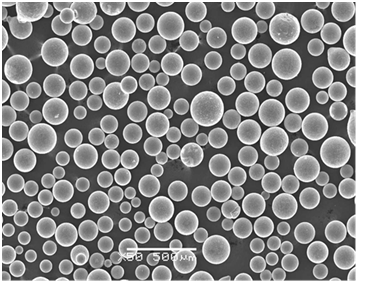
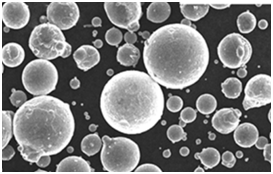

Avantages de la poudre Stellite 21
- Résistance exceptionnelle à l'usure: La stellite 21 est pratiquement inégalée en termes de résistance à l'usure dans les applications soumises à de fortes contraintes. Cette caractéristique à elle seule lui confère une valeur inestimable dans les industries telles que l'aérospatiale, le pétrole et le gaz.
- Résistance élevée à la corrosion: L'alliage peut résister à la corrosion dans des environnements où d'autres matériaux, y compris certains aciers inoxydables, peuvent échouer. Il est donc idéal pour les applications où les contacts avec les produits chimiques sont fréquents.
- Stabilité de la température: Même à des températures élevées (jusqu'à 950°C), la Stellite 21 conserve ses propriétés mécaniques. Ceci est particulièrement important pour les turbines et les moteurs qui fonctionnent sous une chaleur extrême.
- Biocompatibilité: Parce qu'il ne réagit pas négativement avec les tissus biologiques, il est utilisé dans les implants médicaux, offrant à la fois durabilité et compatibilité avec le corps humain.
Avantages et inconvénients
| Avantages | Inconvénients |
|---|---|
| Haute résistance à l'usure dans les environnements abrasifs | Cher par rapport à d'autres solutions en acier inoxydable |
| Excellentes performances à haute température | Nécessite des techniques de traitement spécialisées |
| Résistance supérieure à la corrosion dans des conditions difficiles | Un post-traitement peut s'avérer nécessaire pour obtenir des propriétés optimales |
| Biocompatible pour les applications médicales | Risque de fragilité en cas de choc important |
Comparaison de la poudre Stellite 21 avec d'autres poudres métalliques
Pour mieux comprendre pourquoi la poudre Stellite 21 se distingue, comparons-la à d'autres poudres métalliques courantes telles que l'Inconel 625, le carbure de tungstène et l'Hastelloy C-276.
Poudre Stellite 21 vs Inconel 625
- Résistance à l'usure: Stellite 21 présente une résistance à l'usure supérieure à celle de l'Inconel 625, en particulier dans les environnements abrasifs.
- Résistance à la corrosion: Bien que les deux matériaux offrent une bonne résistance à la corrosion, l'Inconel 625 est plus performant dans les environnements à forte concentration de chlorure.
- Stabilité à haute température: Le stellite 21 excelle dans les applications où la résistance à l'usure à haute température est cruciale, tandis que l'inconel 625 est plus adapté à la résistance à l'oxydation.
Poudre Stellite 21 vs carbure de tungstène
- Dureté: Le carbure de tungstène est plus dur, mais la stellite 21 offre une meilleure ténacité et est moins fragile sous les contraintes d'impact.
- Coût: Le carbure de tungstène est plus rentable pour certaines applications d'usure mais n'a pas la polyvalence et la résistance à la corrosion de la stellite 21.
Poudre Stellite 21 vs Hastelloy C-276
- Résistance à la corrosion: Les deux poudres offrent une excellente résistance à la corrosion, mais l'Hastelloy C-276 peut être plus performant dans des environnements très acides.
- Stabilité de la température: Le Stellite 21 est privilégié dans les applications d'usure à haute température, tandis que l'Hastelloy C-276 est utilisé principalement pour la protection contre la corrosion à des températures plus basses.
Spécifications, tailles et normes pour la poudre Stellite 21
En fonction de l'application spécifique, la poudre Stellite 21 est disponible dans une variété de grades, de tailles et de spécifications. Vous trouverez ci-dessous les gammes de tailles et les normes typiques.
| Spécifications | Description |
|---|---|
| Taille de la poudre | 15-53 µm, 45-106 µm, 53-150 µm |
| Normes de fabrication | ASTM F75, AMS 5385, AMS 5796 |
| Densité | 8,4 g/cm³ |
| Point de fusion | 1315-1450°C |
| Dureté (HRC) | 30-40 HRC (tel que déposé) |
Où acheter Poudre Stellite 21 et tarification
Plusieurs fournisseurs proposent de la poudre Stellite 21 dans le monde entier. Les prix peuvent varier en fonction de la quantité requise et du modèle de poudre spécifique.
| Fournisseur | Pays | Prix (par kg) | Notes |
|---|---|---|---|
| Hoganas AB | Suède | $200-$250 | Offre une large gamme de modèles de poudre |
| Carpenter Technology Corp | ÉTATS-UNIS | $180-$230 | Spécialisé dans la formulation de poudres sur mesure |
| Oerlikon Metco | Suisse | $220-$270 | Fournit des solutions de fabrication additive |
| Praxair Surface Technologies | ÉTATS-UNIS | $190-$240 | Connue pour ses poudres de revêtement de haute qualité |
| VDM Metals | Allemagne | $210-$260 | Offre des services d'expédition et de livraison à l'échelle mondiale |
Les prix varient en fonction de la forme de la poudre, du modèle et de la taille de la commande.
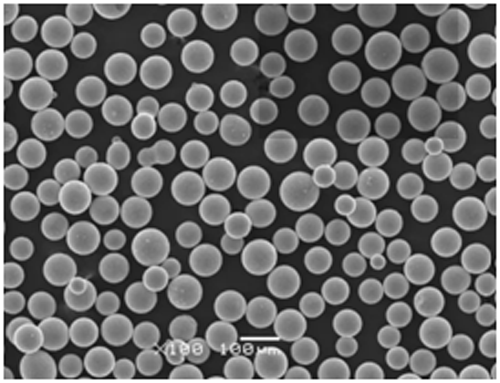
FAQ
| Question | Réponse |
|---|---|
| À quoi sert la poudre Stellite 21 ? | Il est utilisé pour les revêtements, la fabrication additive et la production de pièces métalliques dans des environnements à forte usure. |
| Stellite 21 est-il biocompatible ? | Oui, il est souvent utilisé pour les implants médicaux en raison de son excellente biocompatibilité. |
| Le Stellite 21 peut-il être usiné ? | Oui, mais l'usinage de la stellite 21 nécessite des outils et des techniques spécifiques en raison de sa dureté. |
| Quel est le point de fusion de la Stellite 21 ? | La plage de fusion se situe entre 1315 et 1450°C. |
| Comment Stellite 21 se compare-t-il aux autres alliages Stellite ? | Stellite 21 offre un meilleur équilibre entre la ténacité et la dureté par rapport à certains alliages Stellite plus durs. |

